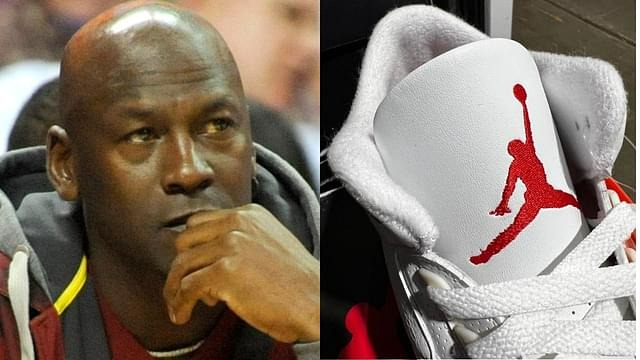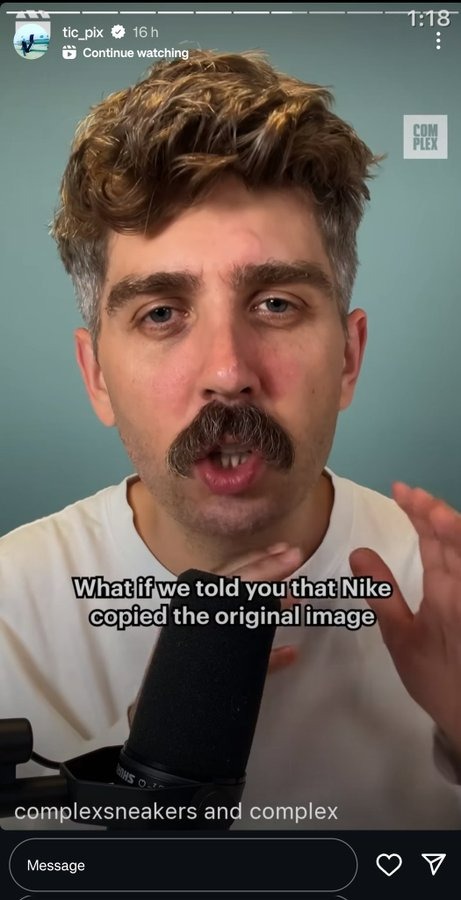
The Jordan Brand’s Jumpman logo might be the only signage with equal if not more global recognition than the Nike Swoosh. However, the logo wouldn’t have existed if not for a photo shoot in 1984, even before Michael Jordan signed with the brand. Hall of Famer Kevin Garnett shared a video from Complex Sports on his Instagram stories detailing how a photo essay led to the birth of one of the most iconic brand logos.
In the clip, narrator Brendan Dunne explains that the iconic Jumpman logo was inspired by photos taken by famous magazine photographer Co Rentmeester in February 1984. Ahead of the Summer Olympics in Los Angeles that year, Life Magazine commissioned a photo essay on American Olympians participating in the event.
Rentmeester traveled to the University of North Carolina’s campus in Chapel Hill to photograph 21-year-old Michael Jordan, who was part of the US Men’s Olympic Basketball Team. During the shoot, Rentmeester instructed Jordan to leap through the air, with his legs splayed out, attempting to make Jordan strike a ballot dancer-like pose.

Ironically, Jordan wore New Balance shoes and Adidas socks during the shoot. The North Carolina star’s choice to sport multiple brands was allegedly a well-crafted maneuver to entice brands to sign him in the offseason after he left the Tar Heels and declared for the 1984 NBA draft.
After Nike signed Jordan in October 1984, the company’s then-creative director, Peter Moore paid Rentmeester $150 for two transparencies of the photo he had clicked during his trip to North Carolina. The company then recreated the image with the rookie dressed in their apparel from head to toe. A silhouette of that image became the Jumpman logo and debuted on the Jordan 3s in 1988 before becoming a global phenomenon.
While Rentmeester’s vision served as the inspiration behind the iconic logo, he rarely gets credit for it. In 1985, he threatened to file a lawsuit against Nike alleging that the brand agreed to pay him $15,000 as a two-year licensing fee to use the image. Rentmeester’s ultimatum worked, as the company paid him what they owed.
However, after the brand used the logo for 30 years with impunity, the photographer filed a lawsuit against them in 2015 but lost. The courts determined the logo was copied but did not infringe on copyrights.
Nike managed to retain the Jumpman logo without paying Rentmeester more money. Ironically though, they had no intention of using it on their shoes and almost lost Michael Jordan as a brand ambassador over their insistence on not putting it on the Jordan sneaker line.
The time Tinker Hatfield and the Jumpman logo saved Nike
In 1987, Nike vice-president Rob Strasser and chief designer Peter Moore left the company due to ideological differences with owner Phil Knight and founded their own sports consulting firm called Sports Inc. However, Adidas soon poached them and tasked them with helping the brand return to its former glory and bringing Michael Jordan to the brand.
The Chicago Bulls star’s contract with Nike was set to expire in 1990, and Adidas wanted to ensure that he’d sign for them once he hit free agency. Strasser and Moore’s abrupt exit caused panic at Nike’s headquarters, as the duo was at the forefront of the Jordan 3 design and launch, which was scheduled to happen only five weeks after they left the company.
But the company planned to go ahead with the launch and summoned Tinker Hatfield, the incredible designer who pioneered the birth of one of Nike’s greatest inventions, the Air Max sneakers. He flew to meet the Bulls to understand his vision for the Jordan 3.
The superstar had two demands: He wanted his own subdivision under Nike and demanded that Jordan Brand products have the Jumpman logo, asking for the Nike Swoosh to be done away with for his signature line. Despite being told no by Nike, Hatfield designed the Air Jordan III with the Jumpman logo instead of the patented Nike Swoosh.
The design was approved and the shoe was a smash hit. Every Jordan Brand sneaker since has the iconic silhouette of Jordan suspended in the air, posing like a ballerina with a ball in his palm. The decision to approve Hatfield’s design has been extremely profitable for the five-time MVP and the brand.